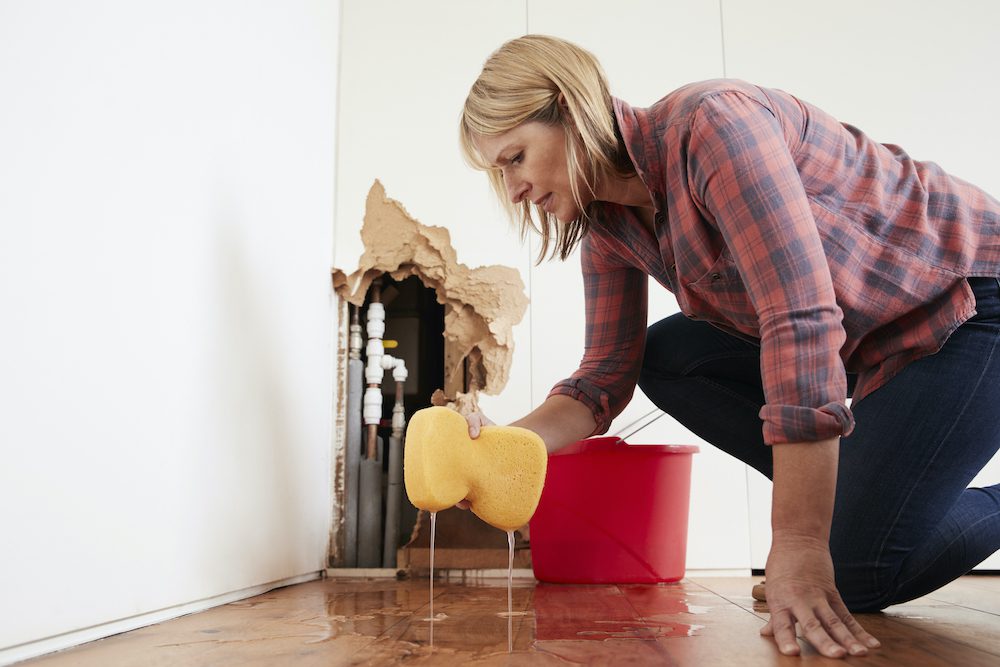Revealing Hidden Water Line Leaks: 6 Useful Detection Tips
Revealing Hidden Water Line Leaks: 6 Useful Detection Tips
Blog Article
The article author is making a number of good points on Leaking water lines overall in this content followed below.

Early discovery of dripping water lines can alleviate a potential disaster. Some little water leakages may not be visible.
1. Examine the Water Meter
Every residence has a water meter. Inspecting it is a surefire manner in which helps you uncover leaks. For beginners, turn off all the water resources. Ensure no one will certainly purge, make use of the faucet, shower, run the cleaning maker or dishwasher. From there, most likely to the meter as well as watch if it will transform. Considering that no person is using it, there need to be no motions. If it moves, that shows a fast-moving leakage. If you discover no modifications, wait a hr or 2 as well as check back once again. This indicates you may have a sluggish leak that can even be below ground.
2. Examine Water Consumption
Evaluate your water costs and also track your water intake. As the one paying it, you must see if there are any kind of disparities. If you spot sudden changes, regardless of your consumption being the same, it indicates that you have leaks in your plumbing system. Bear in mind, your water expense should drop under the exact same range every month. An unexpected spike in your expense indicates a fast-moving leakage.
A stable increase every month, even with the exact same habits, reveals you have a sluggish leakage that's also gradually intensifying. Call a plumber to completely examine your building, specifically if you feel a cozy area on your flooring with piping beneath.
3. Do a Food Coloring Test
When it comes to water usage, 30% comes from toilets. If the shade somehow infiltrates your bowl throughout that time without flushing, there's a leak in between the container as well as bowl.
4. Asses Outside Lines
Don't fail to remember to examine your exterior water lines also. Should water seep out of the connection, you have a loosened rubber gasket. One tiny leak can lose lots of water as well as surge your water bill.
5. Inspect and also Examine the Circumstance
House owners ought to make it a behavior to examine under the sink counters and even inside closets for any type of bad odor or mold and mildew development. These two warnings show a leak so punctual focus is called for. Doing regular assessments, even bi-annually, can save you from a major issue.
More notably, if you recognize your house is already old, maintain a watchful eye on your heaters, hoses, pipes etc. Check for stainings and damaging as most pipelines as well as devices have a life span. They will likewise normally weaken due to deterioration. If you think leaking water lines in your plumbing system, do not wait on it to escalate. Call a specialist plumber right away so you do not end up with an awful mess in your house.
Early detection of leaking water lines can reduce a potential calamity. Some small water leaks might not be visible. Inspecting it is a surefire way that assists you discover leakages. One little leakage can lose tons of water and increase your water bill.
If you presume dripping water lines in your plumbing system, don't wait for it to intensify.
WARNING SIGNS OF WATER LEAKAGE BEHIND THE WALL
PERSISTENT MUSTY ODORS
As water slowly drips from a leaky pipe inside the wall, flooring and sheetrock stay damp and develop an odor similar to wet cardboard. It generates a musty smell that can help you find hidden leaks.
MOLD IN UNUSUAL AREAS
Mold usually grows in wet areas like kitchens, baths and laundry rooms. If you spot the stuff on walls or baseboards in other rooms of the house, it’s a good indicator of undetected water leaks.
STAINS THAT GROW
When mold thrives around a leaky pipe, it sometimes takes hold on the inside surface of the affected wall. A growing stain on otherwise clean sheetrock is often your sign of a hidden plumbing problem.
PEELING OR BUBBLING WALLPAPER / PAINT
This clue is easy to miss in rooms that don’t get much use. When you see wallpaper separating along seams or paint bubbling or flaking off the wall, blame sheetrock that stays wet because of an undetected leak.
BUCKLED CEILINGS AND STAINED FLOORS
If ceilings or floors in bathrooms, kitchens or laundry areas develop structural problems, don’t rule out constant damp inside the walls. Wet sheetrock can affect adjacent framing, flooring and ceilings.
https://www.servicemasterbyzaba.com/blog/how-to-detect-water-leakage-in-walls/

I was made aware of that report about Top leak detection hacks from a good friend on another web address. Sharing is good. Helping people is fun. Many thanks for going through it.
Request Free Estimate Report this page